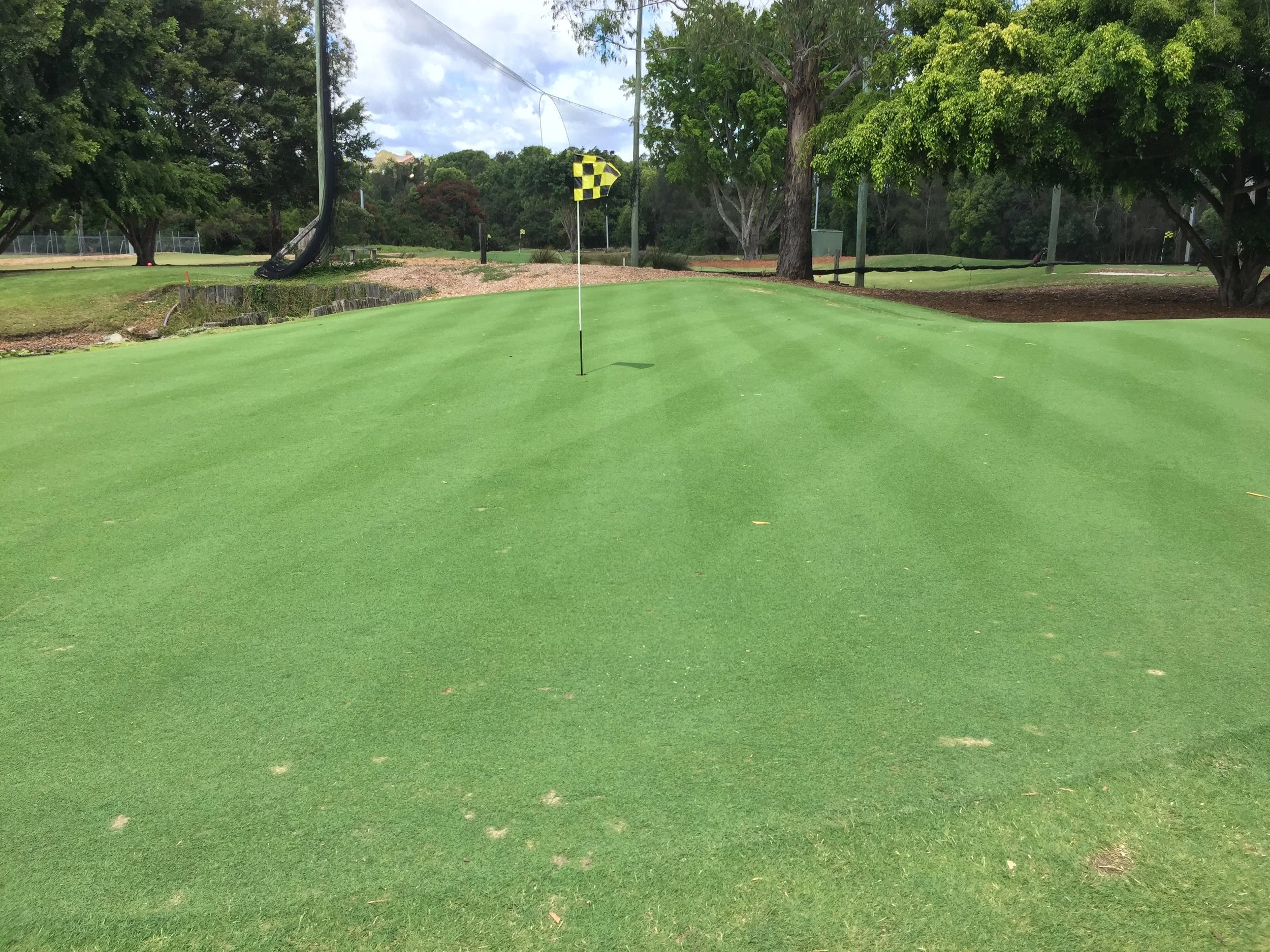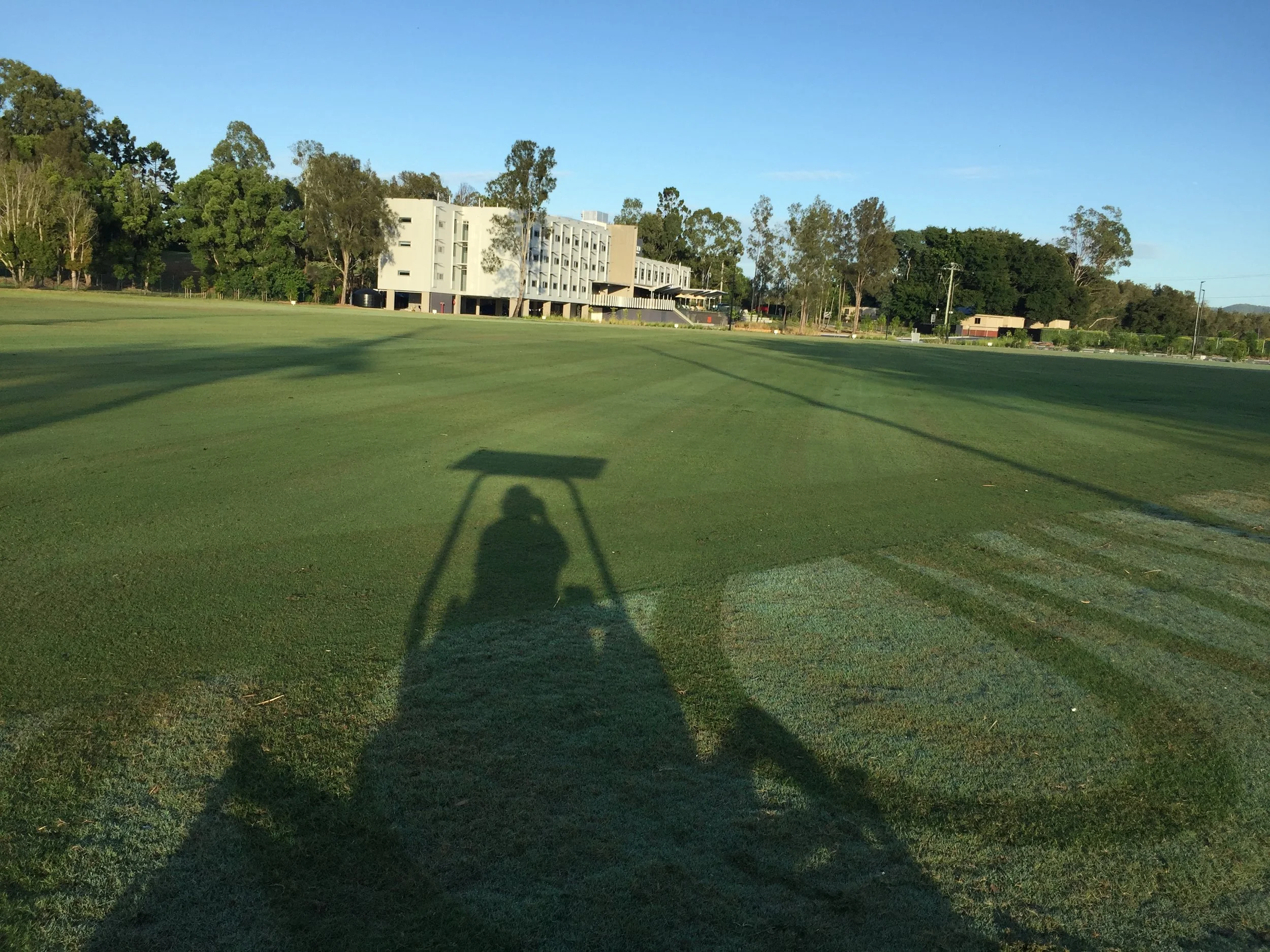Across the Pond: Australia’s First 100% Organic Golf Course
A Conversation with Andrew Glen of KDV Sport
KDV Sports Complex on the Gold Coast of Australia.
“It’s a fallacy to say that organic is expensive. It’s way, way less expensive.
”When you try to outsmart nature, you are destined to fail.”
In October, I had the opportunity to chat with Andrew Glen, superintendent at KDV Sport multi-sport complex on the Gold Coast of Australia. KDV Sport hosts 12 holes of golf with a driving range, golf academy, sports field, tennis courts, swimming pool, and gymnasium.
Andrew hopes to dispel the myths of organic golf being too costly or impractical. In his view, the chemical path is the expensive path.
Organic golf is feasible and can produce significant cost savings. It just happens to be the case that very few golf courses in the world have even attempted this approach. An article written by Olivia White of Acer Consulting titled What is an ‘organic’ golf course, and why aren’t there more of them? dives deeper into the subject.
In its transition to becoming Australia’s first 100% organic golf course, KDV Sport has realized:
50% cost savings (from inputs alone)
Reduced need for renovations
Eliminated need for plants, property and equipment (PPE) for chemical storage
Improved biodiversity
More drought tolerant turf
Minimal problems with pest, weed and disease infestation
Eliminated problems with thatch accumulation
Improved resilience of turfgrass
Increased interest and engagement among golfers
Despite the many exaggerated rumors about how difficult and expensive it is to run an organic golf operation, my conversation with Andrew Glen hopes to offer a new narrative:
When did your interests in golf and sustainability first intersect?
I actually started in the golf industry as a golfer. Didn’t have the finances to get into the professional circuit so I got into the turf management side. Then I did my apprenticeship, and I worked in the industry for the past 35 years throughout Australia, Florida U.S.A. for a bit, Southeast Asia, China and Ukraine for a good 9 years , in the construction and management of golf and sporting facilities.
I’ve always had an interest in sustainability. Surprisingly, you learn very little about soil biology in turf management education. I did have one teacher who delved into it with us, and I’ve always looked at ways that I can improve soil biology without going down the chemical path, which is an expensive way to go. It really wasn’t until I got back here that I was challenged to head down this direction.
…which segues naturally into my next question… what inspired you to run an organic program at the KDV Sport multi-sport complex? And could you explain what the complex offers?
We have a 12-hole short course with a driving range and sports field, comprising roughly 10 hectares.
One of the reasons I headed this [organic] way was because we’re in a sensitive floodplain area. So I just put the idea in front of management that it makes sense. It would save a lot of costs. It may have been a bit more difficult to first attempt it at a bigger facility, but we quickly realized cost savings.
We don’t need a specialized chemical storage facility. We don’t need specialized wash-down areas. We don’t require PPE. So we hoped for cost savings, and it turns out, just from inputs alone we’ve saved roughly 50% of our costs. It’s a fallacy to say that organic is expensive.
It’s way, way less expensive.
How big of a risk was it initially to make this shift? And what did you do to mitigate any potential risks?
There’s nothing in the industry to really look upon, so it was a risk at the time, but knowing what I know now, it’s not a risk. If I went into another project now, it wouldn’t present a risk to me.
Do you think it would scale to a larger operation?
If it’s complicated or difficult or expensive, it’s hard to scale up, but in our case, it’s pretty much a matter of increasing inputs. When developing the program I always kept this in mind – that it should be something that can be easily scaled up, so this isn’t an issue and I don’t see why not. The other thing to consider is a reduced need for renovation as you build up soil biology. I still have no thatch despite not using catches, because of improved all-around soil biology, as you would have in a natural environment. By establishing a natural biodiversity, mycorrhizal fungi and other symbiotic relationships develop with the plant to exchange nutrients. This natural biodiversity gives the turfgrass a 100x improvement in nutrient and water availability.
Thatch is no longer an issue due to the biology consuming the thatch and returning the nutrient back to the plant. This is the law of return. We don’t use catches on our greens and I haven’t had to renovate the greens in the last 4 years and we still have no thatch.
How would you recommend other operators find a “diverse array of indigenous microbes”? Could you explain your methodology behind building healthy soil biology?
The biology where I’m located won’t be the same as the Southern parts of Australia, for example. The most successful way is to use the biology from the local environment.
People also tend to look into it with a bit too much complexity. The plant will sort out what it wants and doesn’t want.
Is it self-selecting, in a sense?
Yes, and soil is far more complex than we can even imagine. We know far more about outer space than soil. When you try to outsmart nature, you’re destined to fail.
What’s the most important thing you’ve learned in this transition to organic?
One of the things I learned was not to panic when problems occur. Try to understand “why”. What’s missing? Then think a little bit outside of the box.
We’ve had no diseases, although we did have some mole crickets, for example. Rather than applying chemicals we included some predatory nematodes. On that subject (nematodes), only a small portion of nematodes are actually a problem, and they have a place in a balanced ecosystem. At the end of the day, you either balance the biology, or opportunistic organisms and weeds will take up windows or gaps in the biology.
What net cost savings have you realized from the program?
From overall inputs, we’ve saved 50% roughly. My overall cost of maintaining fairways and roughs currently show about 1,200 Australian dollars per hectare. Greens are running around 11,000 Australian dollars per hectare. Tees 5-6,000 per hectare. This is reducing year on year.
Of course, we’re also saving from not having to store chemicals, special wash-down bays, and PPE. We also don’t have dethatching or aeration going on, so we’re saving from reduced renovation.
What has been the response of golfers? Are there any ways this has attracted new golfers?
We have signage up that we’re 100% organic, which a lot of people ask about and seem to be quite surprised. People are obviously getting more conscientious about the environment at this time.
Has your shift to organic confirmed or denied some of the common fears about going organic? Are there fears or perceptions you hope to address as a result of the work you’re sharing?
Yeah, I’ve heard it all. “He won’t be able to get enough nitrogen.” “You’ll have a huge weed and disease problems or pest infestations.”
We’ve proven all of that wrong or have overcome all of these problems. There’s also the cost factor. Others thought it would be more expensive, but we’ve proven that it’s far less expensive. The chemical path is the expensive path, because you have taken away the soil biology from the system, thus the plant becomes dependent upon you to feed it and protect it, making you a slave to the turf. Without the biology your soil structure starts to break down, thus requiring more inputs with regards to nutrients, irrigation and applications of wetting agents.
What new opportunities might having an organic operation open up? Just as a suggestion, I would think this makes room for something like on-course food production to be safer and more feasible. Could the organic approach invite more possibilities for multi-purpose design?
With something like food production, most people would steer clear knowing what chemicals go into a typical golf course, but this approach does open things up greatly.
Overall, we’re seeing a return of the insects, the dragonflies, butterflies, bees, etc. The balance is coming back in with our approach and we’re seeing greater biodiversity.
We have been observing the different species of birds that have been sighted on our facility and we are up to 51 different bird species, some of which are endangered.
So to summarize all of this, you’ve realized:
Cost savings
Improved biodiversity
Excited golfers
Improved resilience of turfgrass
My last question is one that others will probably have…
What’s the catch?
The turf industry seems to think it’s hard to go down this path, but that’s why I’m getting the word out. I asked the same questions when I started, but I would now say there isn’t a risk.
We as superintendents are managers of the land and it is our responsibility to look after the environment for our future generations.
To reach Andrew, you can connect with him on LinkedIn or through his e-mail andrewglen@hotmail.com



